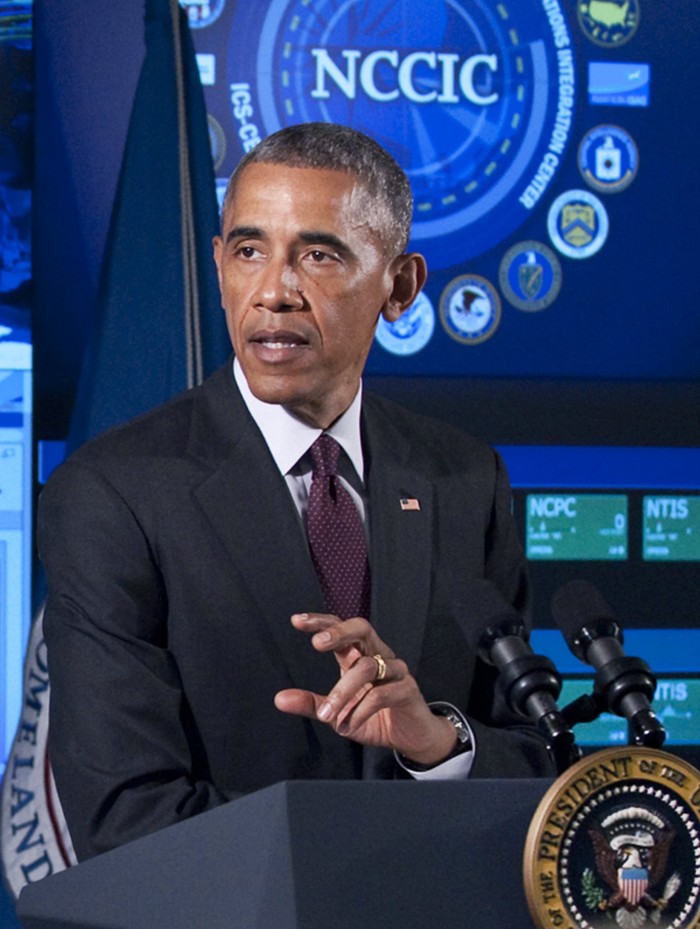What Obama’s Cybersecurity Strategy Leaves Out
After a year of online megabreaches, President Obama on Tuesday proposed sharply increasing cybersecurity spending to $19 billion (from $14 billion) and released an executive order establishing a cybersecurity study commission.
The president’s proposals include retiring antiquated federal servers and IT systems and shaking up R&D efforts to ensure that next-generation technologies are more secure from the start.
But the plan has some big gaps. For one thing, while his new study commission includes a nod to national security in its mission statement, it does not explicitly include a mandate to create policies that will combat terrorists’ use of social networks for recruiting and spreading propaganda.
Obama recently addressed this topic by developing a counterterrorism task force and meeting with Silicon Valley titans. But his newly announced initiatives imply a continued reliance on private-sector companies to enforce their terms of service. Last week, for example, Twitter announced it was greatly ramping up efforts to shut down ISIS-supporting accounts. Blocking such accounts is something Twitter has been saying it’s been doing for more than a year.

Herb Lin, a cybersecurity and policy researcher at Stanford University, said the nation needs a “cyberstrategy” in addition to the kinds of “cybersecurity strategies” we heard about today. In an interview, Lin said: “A national cybersecurity strategy is a perfectly fine thing to do. It’s just not comprehensive, in the sense that it does not include a lot of other things.”
For example, ISIS’s use of online social networks “is not cybersecurity in the sense of making your computer more secure, but it is a cyber issue,” he said. “And does the U.S. have a comprehensive approach, a policy approach, to deal with new technologies that pose a risk to privacy?”
The answer is no. Although a second executive order by Obama on Tuesday formed a privacy council, this body is concerned mainly with figuring out ways to safeguard data held by federal agencies. (Last year’s devastating hack on the U.S. Office of Personnel Management exposed the records of more than 21 million people.)
Meanwhile, the political rumblings are ominous. Donald Trump—who is expected to win Tuesday’s Republican presidential primary in New Hampshire—recently advocated shutting down parts of the Internet to prevent young people from being recruited to travel overseas to fight for terrorist causes.
“We’re losing a lot of people because of the Internet,” Trump recently asserted. One can only wonder what his cyberstrategy might include.
Keep Reading
Most Popular
Large language models can do jaw-dropping things. But nobody knows exactly why.
And that's a problem. Figuring it out is one of the biggest scientific puzzles of our time and a crucial step towards controlling more powerful future models.
How scientists traced a mysterious covid case back to six toilets
When wastewater surveillance turns into a hunt for a single infected individual, the ethics get tricky.
The problem with plug-in hybrids? Their drivers.
Plug-in hybrids are often sold as a transition to EVs, but new data from Europe shows we’re still underestimating the emissions they produce.
Google DeepMind’s new generative model makes Super Mario–like games from scratch
Genie learns how to control games by watching hours and hours of video. It could help train next-gen robots too.
Stay connected
Get the latest updates from
MIT Technology Review
Discover special offers, top stories, upcoming events, and more.